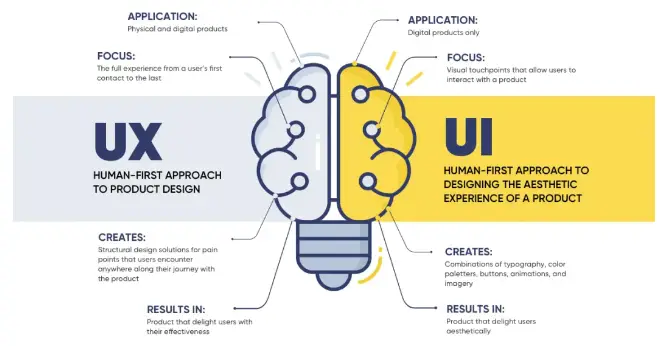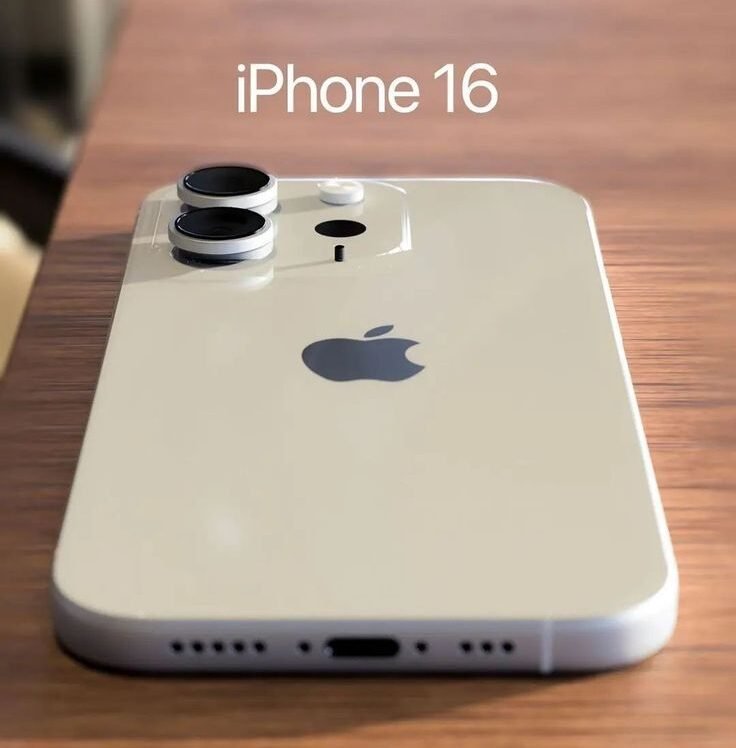We often hear the terms “User Experience (UX)” and “User Interface (UI)” when talking about product design. Even though these ideas have been around for a while, many people still mix them up or use them incorrectly when discussing app and web design. Let’s break down what it really takes to be a good UX/UI designer.
The idea of a “positive experience” can mean different things to different people, so it’s important to really understand your users when designing for them. While we may not always know exactly what makes a great user experience, there are guidelines and principles that can help us create good UX/UI designs.
First, let’s ask a simple question: What is the goal of good UX/UI design?
It might be tempting to focus mainly on providing information that helps visitors understand what you want them to know (like product details) and do (like clicking the “buy now” button).
But the real goal of good UX is to let users interact with your company in the way they want to.
You should consider how your website and mobile apps affect users. Do they understand you? Are you coming across as cold or impersonal? Is your design making users feel rushed? There’s a lot to think about.
Users don’t care about your data or research; they care about how your product works for them. Overthinking the design can make it too complicated. The key is to design the product right the first time, making sure it does exactly what it needs to do and nothing more.
Let’s break this down step by step.
What are User Experience (UX) and User Interface (UI)?
User Experience (UX) design is about how customers interact with a website, app, or product. It focuses on designing for the overall experience, not just how it looks.
User Interface (UI) design, on the other hand, is about creating the visual aspects of software or electronic devices, focusing on aesthetics and style.
What is the relationship between UX and UI?
The User Interface (UI) is about the appearance of a website or product, while UX is about understanding what a user wants and feels. In simpler terms, UX is the process of figuring out what the user needs, and UI is the final design that delivers that experience to the user.
UX design takes into account seven key elements, as outlined in the user experience honeycomb by Peter Morville and later refined by Katerina Karagianni, to understand how customers use products and how they think and feel about them.

What is User Experience (UX)?
User Experience (UX) is about how customers interact with your company and products. It’s not just about the product itself but also about the whole experience of buying and using it—whether it’s easy to use, enjoyable, practical, or meets a specific need. In fact, 70% of CEOs now see UX as a key way to stand out from competitors, helping to attract, convert, and keep customers. For every $1 spent on UX, brands can see an average return of $100—a 9,900% ROI.
What Does UX Design (UXD or UED) Focus On?
UX design revolves around these key questions:
- Is it useful? The product or service should meet a customer’s wants or needs with depth and originality.
- Is it desirable? The design should be visually appealing and focused on image and branding, not just function.
- Is it findable? Can users easily find the site or service? Is the navigation simple and straightforward?
- Is it usable? How quickly and efficiently can users complete their tasks? This includes the number of clicks, server speed, and the familiarity of the design.
- Is it accessible? Can all users experience the product or service in the same way?
- Is it credible? Does the product or service seem trustworthy? Quality, reputation, and social proof (like online reviews) are crucial for building trust.
- Is it valuable? Value is the ideal mix of all the above factors, as different customers prioritize different aspects.
What About User Interface (UI)?
UI is just one part of the overall UX journey. UI design, also known as interface design, focuses on the visual aspects of a website—like layout, colors, placements, and fonts. It overlaps with the “desirable” and “usable” factors in UX but only covers the digital interactions a customer has with the product.
Example: Imagine you sell organic, all-natural toothpaste. Here’s what a UX designer and a UI designer might consider:
UX Designer Questions:
- How did you discover our website?
- Where did you come from?
- What was your first impression of our site?
- How easy was it to find the product, read about it, and see customer reviews?
- What information made you decide to buy?
- How was the checkout process? Was it fast, smooth, and easy to complete your purchase?
- Did you like the product and its packaging?
UI Designer Questions:
- What visual elements helped you find the right product and make a decision?
- Does the design look good on any screen size and resolution?
- Is the website visually appealing?
Notice that the UX designer focuses on customer interactions, while the UI designer focuses on the look and feel of the site.

What Makes a Good UX Design?
Good UX design involves carefully defining the customer (persona), identifying the problem, and developing the best strategy to solve it. That’s why working with an experienced design agency is crucial—they can help your organization create a clear vision and strategy for delivering a great user experience. While UX design requires effort, having the right agency by your side can help you achieve your UX goals and make your customers happy. Remember, the customer-centric terms we identified earlier should evaluate good UX design: whether the product is practical, usable, findable, credible, accessible, desirable, and ultimately valuable. Let’s talk about how we can design for the user experience.- Interview stakeholders to understand user behavior, constraints, and pain points. This step helps define the business goals of the product.
- Conduct user research to identify user personas (who your buyers are) and user journeys (how they complete tasks). This helps pinpoint the necessary features.
- Perform a UX audit to uncover flaws in your current website, app, or product that might cause users to leave or stop using it.
- Define your requirements—What is the project? What should it look like? How does it solve the customer’s problem?
- Create a wireframe or information architecture (IA) as a blueprint for your design and how it will function.
- Design the visual elements, focusing on the look (UI) and functionality.
- Prototype an interactive model for feedback from stakeholders and users, then refine it based on their input.
- Test with real users to gather detailed feedback. This testing can include usability tests, analytics, and A/B testing.
- Perception metrics (e.g., NPS scores)
- Descriptive metrics (e.g., abandonment rates)
- Outcome metrics (e.g., conversion rates, average order sizes, call escalation rates)
What Makes Good UI Design?
While UX and UI are different, good UI plays a big role in creating a positive user experience. Good UI design is engaging and helps delight your users. A great UI should be almost invisible—the user shouldn’t have to think about where the menu is or how to use it. When considering UI design, keep these principles in mind:- Consistency: The UI should be easy to understand and align with the brand.
- User control: Make the interface intuitive and easy to navigate.
- Comfort: Users should feel comfortable interacting with the product.
- Reduced cognitive load: Keep the design simple to minimize the mental effort needed to use it.

























